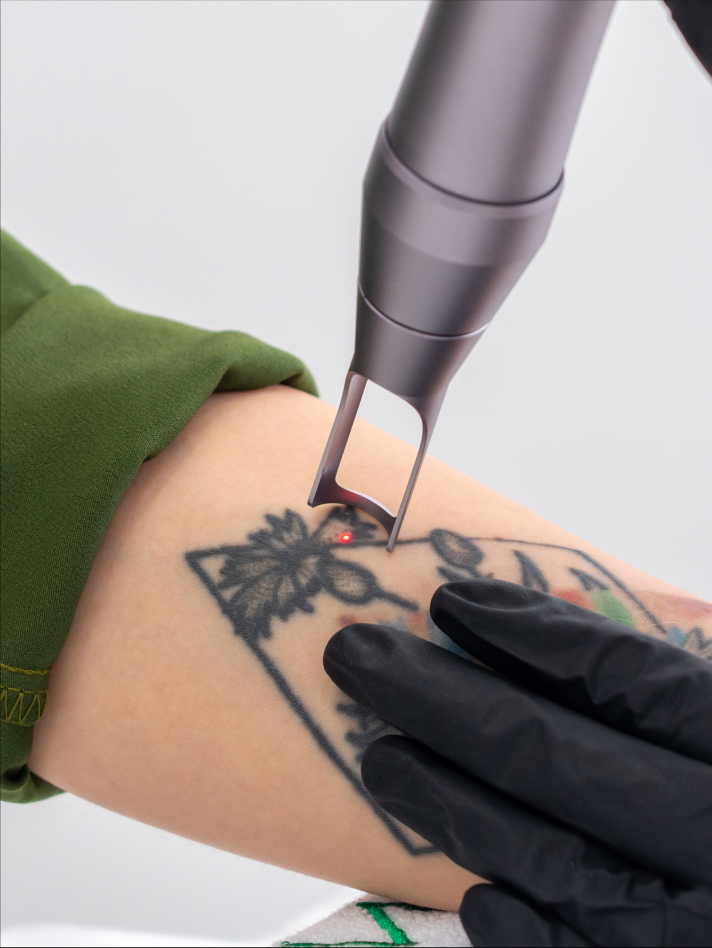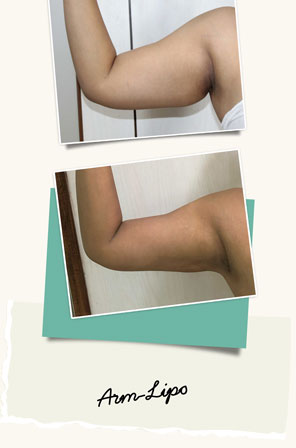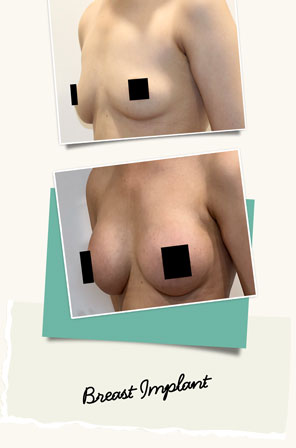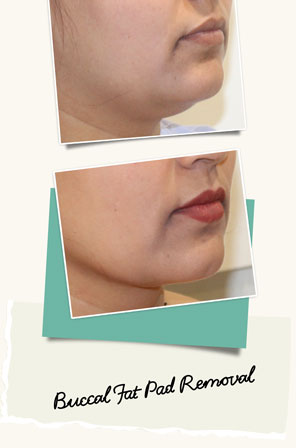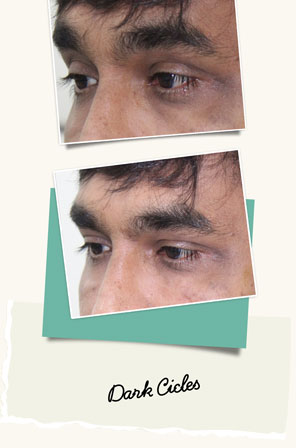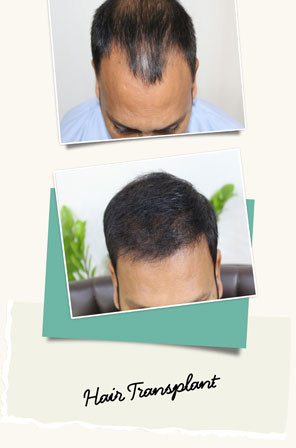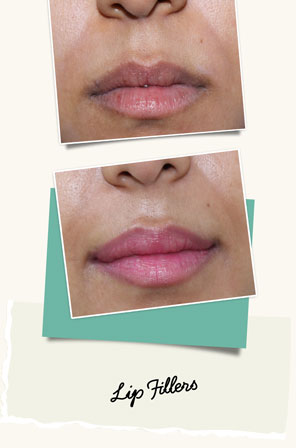
Home » Tattoo Removal
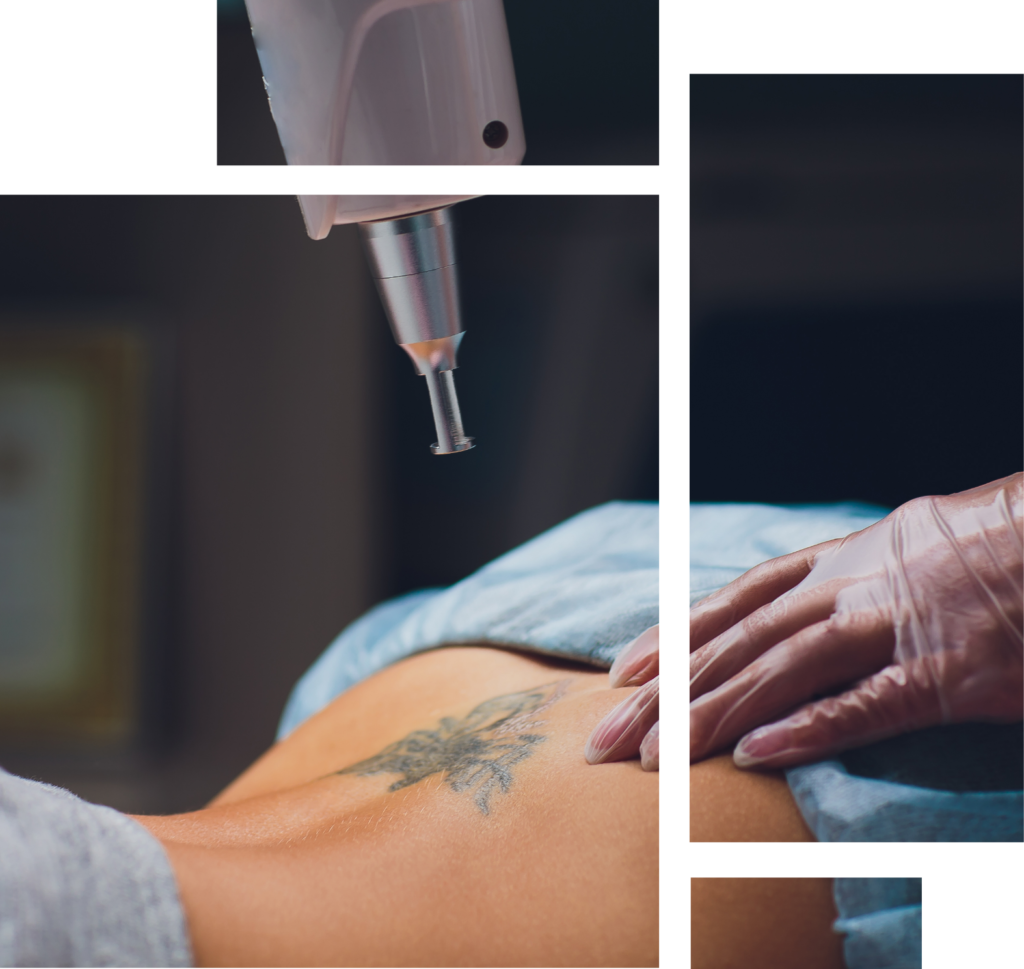
Tattooing
Tattooing has been practiced as a part of human culture across the globe since centuries.
However, its evidence can be seen only to the 4th millennium BC that was done on a mummified human skin.
The purpose of Tattooing has varied with time in different eras, in different cultures and in different countries.
Today Tattooing has made a strong comeback and has become more popular than it has ever been.
Tattooing is permanent designs that are sometimes plain, sometimes status symbol, sometimes declaration of love, sometimes an expression of one’s self, signs of beliefs etc.
Today, people with independent minds are ready to demonstrate their thoughts to the world without any fear!
But our desire to express different thoughts remains…

Options for Tattoo Removal
The technique and the ability to remove a tattoo will depend on the amount, age, colour and the depth of tattoo pigment applied to the skin.
In general, the older tattoo responds quickly to the tattoo removal treatment. Colours like greens, pinks, purples and yellows are quite difficult to remove.
Different techniques are applied to remove the tattoo from the skin.
Treatments to remove a Tattoo
1. Laser Techniques
Carbon Dioxide CO2 Laser: In this treatment, carbon dioxide laser is used that creates an abrasion on the skin that destroys the superficial skin, thus leading to the coloured pigment removal from the surface of the skin.
This method causes significant inflammation and always leaves scars. About one to five treatment sessions may be required by the use of this technique.
Q-Switched Nd-YAG Laser: This procedure is applied to remove the injected ink from the superficial to the mid-dermis layers of the skin. The Q-switched lasers emit high-intensity infrared or green light pulse in a rapid manner. These light rays explode the pigment particles beneath the skin into fine particles. This technique may require as many as eight to ten laser treatment sessions in about four to six-week intervals for a complete or maximum removal of the tattoo. This laser treatment works well for tattoos that are dark blue, red or black in colour.
However, this treatment is not good for the removal of yellow and green pigment.Minimal to no scarring is observed by the use of this technique.
Q-Switched Ruby Laser: This laser technique works on almost the same principal as the Q-Switched Laser Nd-YAG laser. The Ruby laser technique works well to remove green pigment and is also ideal for dark pigments.
2. Surgical Excision:
Surgical Excision: Surgical Excision technique is good for small tattoos or tattoos that are easily accessible. This technique involves surgical removal of the tattooed skin by the use of a scalpel and then closing the wounds. This treatment can take a single session or multiple sessions.
The scar is expected as the outcome of this procedure that can be lightened with further laser treatment.
Is Laser treatment best to remove my Tattoo?
The best laser treatment to remove your tattoo depends on the location, size, and the colour of the tattoo pigments. Most importantly, it depends on your readiness to accept incomplete removal, scarring, or multiple treatment sessions. There are certain dark coloured tattoos and some are deeply rooted into the layer of the skin, that might take multiple sessions with lasers treatment. However, complete and virtually scarless removal of the tattoo can be achieved by laser treatment, making it one of the best options for tattoo removal.
What can be done to minimize discomfort during treatment?
Local anaesthetic agent along with the injection of Lidocaine is used to perform the surgical excision and dermabrasion techniques. The Q-Switched lasers technique gives the feeling of a stretched rubber band snapping against the skin that is tolerable by most people.
What are the risks and side effects of the treatments?
- Incomplete removal of the coloured pigment.
- Skin lightening or darkening.
- Infection
- Scarring
We, at Mayfair Aesthetic Surgery Clinic, will take every precaution to minimize any potential side effects.
Can cosmetic tattooing around the lips or the eyebrows be removed?
First of all, a test spot is needed to recommend the best laser treatment for the removal of the particular pigment.
There are certain tattoo inks having titanium dioxide or ferric oxide, that, when treated with Q-Switched laser, turns jet black. You will be informed and advised of these possibilities and then CO2 laser treatment will be recommended. You may require multiple treatments for a good and optimal result.
Therefore, cosmetic tattooing around the eyebrows and/or lips can usually be made light with one or with several sessions of laser treatments.
Post Treatment Instruction
Moisturizing the treated area and then covering it up with a temporary dressing is very important and recommended to avoid the formation of scabs and scars. This needs to be done till the irritated skin soothers that take usually two to four days.
Reviews
 Mittal2024-04-24Amazing doctor make my life beautiful.they give me confidence back feeling so blessed doctor kedarnath thanks so much. Good staff Nice hospital Wonderful experience
Mittal2024-04-24Amazing doctor make my life beautiful.they give me confidence back feeling so blessed doctor kedarnath thanks so much. Good staff Nice hospital Wonderful experience ANISH KUSHWAHA2024-03-05Behaviour of staff members is good
ANISH KUSHWAHA2024-03-05Behaviour of staff members is good Avnish kumar Yadav2024-03-05Best one🤩
Avnish kumar Yadav2024-03-05Best one🤩 Nikhil kolekar2024-03-05Dr. Kedarnath Pandya's exceptional expertise and meticulous attention to detail are greatly appreciated. Thank you for your invaluable guidance.
Nikhil kolekar2024-03-05Dr. Kedarnath Pandya's exceptional expertise and meticulous attention to detail are greatly appreciated. Thank you for your invaluable guidance. Ashmit sharma2024-03-03The results of my procedure exceeded my expectations. I couldn't be happier. I cannot put into words but my dressing has changed, my confidence improved and as he says “you will discover a new you” – it is the truth! Thank u sir
Ashmit sharma2024-03-03The results of my procedure exceeded my expectations. I couldn't be happier. I cannot put into words but my dressing has changed, my confidence improved and as he says “you will discover a new you” – it is the truth! Thank u sir Rashi Ramani2024-03-03Dr. Pandya's knowledge and expertise are evident in every aspect of his work. Thanks for the amazing treatment!!! Sir is very practical and shares all aspects of every procedure… he has a very steady hand… thanks sir
Rashi Ramani2024-03-03Dr. Pandya's knowledge and expertise are evident in every aspect of his work. Thanks for the amazing treatment!!! Sir is very practical and shares all aspects of every procedure… he has a very steady hand… thanks sir Maria Grazia Palma2024-02-01Doctor Kedarnath Pandya and the Mayfair Aesthetic clinic have been a revelation in my search for a trustworthy and skilled medical professional. After consulting with numerous doctors in pursuit of a surgical procedure, I can confidently say that Dr. Pandya far exceeded my expectations on every level. His unparalleled knowledge and extensive experience in the field were immediately evident, but what truly set him apart was his exceptional understanding of the patient's perspective. Dr. Pandya's patience and willingness to guide me through every step of the decision-making process were invaluable. He provided me with thorough advice and an abundance of information, allowing me to make an informed decision at my own pace. This aspect of his practice truly demonstrated his commitment to putting the patient's well-being above all else. Moreover, the utilization of cutting-edge technologies at Mayfair Aesthetic was impressive, reflecting Dr. Pandya's dedication to staying at the forefront of medical advancements. The clinic itself was immaculately clean, creating a comfortable and reassuring environment for patients. Additionally, the staff members were incredibly kind and welcoming, further enhancing the overall experience. In conclusion, I wholeheartedly recommend Doctor Kedarnath Pandya and Mayfair Aesthetic to anyone seeking a skilled, knowledgeable, and compassionate medical professional. Dr. Pandya's commitment to patient care and the exceptional standards upheld at his clinic make him an exemplary choice for anyone in need of medical services.
Maria Grazia Palma2024-02-01Doctor Kedarnath Pandya and the Mayfair Aesthetic clinic have been a revelation in my search for a trustworthy and skilled medical professional. After consulting with numerous doctors in pursuit of a surgical procedure, I can confidently say that Dr. Pandya far exceeded my expectations on every level. His unparalleled knowledge and extensive experience in the field were immediately evident, but what truly set him apart was his exceptional understanding of the patient's perspective. Dr. Pandya's patience and willingness to guide me through every step of the decision-making process were invaluable. He provided me with thorough advice and an abundance of information, allowing me to make an informed decision at my own pace. This aspect of his practice truly demonstrated his commitment to putting the patient's well-being above all else. Moreover, the utilization of cutting-edge technologies at Mayfair Aesthetic was impressive, reflecting Dr. Pandya's dedication to staying at the forefront of medical advancements. The clinic itself was immaculately clean, creating a comfortable and reassuring environment for patients. Additionally, the staff members were incredibly kind and welcoming, further enhancing the overall experience. In conclusion, I wholeheartedly recommend Doctor Kedarnath Pandya and Mayfair Aesthetic to anyone seeking a skilled, knowledgeable, and compassionate medical professional. Dr. Pandya's commitment to patient care and the exceptional standards upheld at his clinic make him an exemplary choice for anyone in need of medical services. savalia manoj2023-11-10Mayfair Aesthetic Surgery is very good and experienced. Dr. Kedarnath Pandya is very experienced and he boosted my confidence in the procedure. I highly recommend their services to anyone seeking cosmetic enhancements. I am happy to give a reference to my friends.
savalia manoj2023-11-10Mayfair Aesthetic Surgery is very good and experienced. Dr. Kedarnath Pandya is very experienced and he boosted my confidence in the procedure. I highly recommend their services to anyone seeking cosmetic enhancements. I am happy to give a reference to my friends. Rajesh kumar Arya2023-06-29I got liposuction done after researching so much. Mayfair Aesthetics was the best in Ahmedabad. And I can see the results.
Rajesh kumar Arya2023-06-29I got liposuction done after researching so much. Mayfair Aesthetics was the best in Ahmedabad. And I can see the results. Ashish Tiwari2023-06-29Mayfair Aesthetics is top-notch for laser hair removal. The staff is knowledgeable, and the treatments are effective and comfortable.Load moreGoogle rating score: 5.0 of 5, based on 169 reviews
Ashish Tiwari2023-06-29Mayfair Aesthetics is top-notch for laser hair removal. The staff is knowledgeable, and the treatments are effective and comfortable.Load moreGoogle rating score: 5.0 of 5, based on 169 reviews
FAQs about Tattoo Removal Treatment
The number of sessions depends on factors like tattoo size, color, and ink depth. Multiple sessions are usually required, spaced several weeks apart.
While significant advancements have been made, complete removal is not always guaranteed. Factors like ink colors and skin type can impact the effectiveness of removal.
After the skin has healed completely, you can consider getting a new tattoo if desired. However, it’s essential to discuss this with your tattoo removal specialist.
We at Mayfair Aesthetic Surgery ensure that you get adequate time for all your consultation appointments so that you can clear all your doubts by having an interactive session with Dr. Kedarnath Pandya, Board Certified Cosmetic Plastic Surgeon.
Mayfair Aesthetic Surgery:
A preferred destination for transformative cosmetic procedures, delivering unparalleled results for both locals and NRIs alike.
© Mayfairaestheticsurgery, All Right Reserved.


